| Umělec magazine 2006/3 >> Plan B | List of all editions. | ||||||||||||
|
|||||||||||||
Plan BUmělec magazine 2006/301.03.2006 Edith Jeřábková a Lenka Vítková | essay | en cs de |
|||||||||||||
|
The need to outline the state of the Czech visual scene from the point of gallery operations emerged from our conversation with visitors of exhibition openings. The goal is to catch the ongoing phase of the emergence of something new, and the causes of the current situation.
We are not interested in judging the activities of the galleries. We introduce them here via a questionnaire. Additional conclusions are derived from an evening –long meeting with curators that transpired March 13 at the back-room of U Slovanské lípy, a pub in Zižkov, Prague. We are particularly interested in how galleries see themselves; how they define their creative program (curators, producers, organizers); among artists and gallery owners—how their own position in the art scene influences their participation in galleries, what their relationship to the medium is, the official scene, critics; whether there is any plan to represent artists abroad, and in cooperation with foreign institutions. In the following text, we present extracts of these discussions. We see the purpose of the gathering, we understand in retrospect, that all participants together have established a setting for which such formulations [could be] stated. They were defined from the circumstances that might seem clear to members of the community. In the following text we explain why we directed our attentions to these particular galleries and spaces for contemporary art: A.M.180, c2c, Display, Entrance, ETC., Jelení and NoD. For the moment, we set aside discussion about galleries in other Czech towns that have particular representation coming from geographic location, galleries that function on an institutional or commercial basis, internet galleries, artistic awards and the media. In 1999, the Linhart foundation acquired a liese to the extensive space on the upper floor of the Roxy club, Dlouha 33. Universální prostor NoD, the “The NoD Universal Space,” was in its time, the largest non-commercial space for contemporary art. The gallery is connected to a theater, an internet cafe and a bar. The artist Krištof Kintera was the gallery’s curator from 1999-2001. In 2000, the Jelení gallery was established on the grounds of the Prague Castle Administration on Na Brusnici street, within the former Soros Center for Contemporary Arts. The program was defined by Gabriela Kotíkova-Bukovinska. Working with other invited curators, the initiative was directed from the start at the most progressive of Czech and Slovak art. In 2001, the Display Space for Contemporary Art was established on Bubenska St in Holešovice. Ondřej Chrobák, David Kulhánek and artists Zbyněk Baladrán and Tomáš Svoboda rented store-front space from Prague 7 district. The program has been to feature the conceptual scene abroad, with contextual approaches to artistic work in a context where curator and artist intermingle. This set up in reaction to the absence of presentation of contemporary foreign art in the Czech Republic, and is set up to establish a unique context for selected Czech artists. David Kulhánek, Display: “when we began to think about a gallery, we wanted to limit ourselves to a space where one wouldn’t get the feeling of being in a gallery of contemporary art. That was at a time when it seemed as though there would be more places where something was going on, than today, and we needed to enter a mixed program.... when possibly multifunctional spaces that attract people to spaces that there is some alternative space and alternative culture that didn’t belong to any other gallery, and that’s false because there are no functioning standard galleries, and this label “alternative” is counterproductive. In 2002, the contemporary art scene lost the Václav Špála gallery, Nova Sin and Mánes, and the MXM gallery was closed. In late 2002 Veronika Bromová, Veronika Drahotová and Aleksandra Vajd founded Home Gallery with the ambition of linking Czech and international scenes. In May, 2002, the Rafani group established CO 14 in the spaces of the former studio of Rafani and its courtyard. The term of the exhibition at the exhibition opening and necessity to work with the space itself endowed projects with conceptual and performance exhibitions. CO 14 helped establish a precedence for contemporary small galleries where visitors tend to come only during the vernisage. In June, 2003, Rafani ended. After a decade the Gandy Gallery closed. The institutionally-defined Futura Gallery opened. In 2004, the Jelení Gallery moved to a significantly smaller space, on Drtinova street in Smichov (Prague 5). Veronika Drahotova’s Home Gallery closed. After four years the Tvrdohlaví Gallery, run by Václav Marhoul, closed. Karl Babíček’s Behémot closed. With this, the Prague contemporary art scene’s subjects, founded in the nineties, disappeared, and with it the culture of artists and curators who created it (with the exception of the commercial gallery of Jiří Švestka). A.M.180 was founded in 2003 by Štěpán Bolf, Dan Dudarec, Anežka Hošková, Jakub Hošek and Markéta Wilemsa Pecková at the Utopia space on Bělehradska Street on the boundary between Vinohrady and Nusle. At first Utopia featured musical productions and exhibitions. Now the AM.180 collective presents in addition to exhibitions videoprojections as well, with Radim Labuda and Štěpán Skalský as curators; concerts have been shifted to other Prague clubs. The collective’s objective is to connect contemporary art and contemporary visual culture on the principle of DIY. Tranzit.cz gave the gallery the tranzit grant award for this year. ETC Gallery began operating in October 2004 in the entryway to the DRAW.etc graphic studio on Jaromír street in Nusle by Jiří Franta and Jiří Skála. According to Franta, the gallery program represents the essential work of the space. Jiří Franta, ETC.: “From our own exhibition work, a need arose to offer artists the opportunity to work freely with the space in ways not allowed in official galleries.” Jiří Skála, ETC.: “...ETC. has been built on the idea that people should try work out their own exhibitions in their own community, and then build their own careers further...ETC. is a way to begin...” In May 2005 Tereza Velíková and Tereza Severová established the Entrance Gallery in the entrance to Karlín Studios on Thámova Street in Karlin. One of their first projects was Saloon, presented as a “non-profit” Czech and Slovak gallery. After working for three years, Tamara Moyzes was succeeded as curator of the NoD space by Zuzana Blochová, Dita Lamačová and Lucie Čermáková. At the end of the year, Display gallery began to work under the banner “Display + Tranzit Space for Contemporary Art,” that expressed the connection of the gallery with the initiative for contemporary art, tranzit.cz, founded, and supported by the Erste Bank Group. In April 2006 Zuzana Štefková, Denisa Kera and Pavel Sedlák established c2c gallery in an old office in a house on Za Strahovem Street, Břevnov. The gallery is aimed at curatorial endeavors, and the c2c corporation wants to establish a critical platform for visual art. *** The people behind the new galleries have no need to react to the nineties, nor to limit their activities. But they do react to the boundaries that remain from those years. Jiří Skála, ETC.:… “Why is it that so many alternative spaces have opened in Prague—a new generation needs places to exhibit, the system didn’t function and new criteria are established...galleries emerge out of nowhere and these must be established over the course of time in order to be maintained. For artists that’s not much time. We shall have to find someone who can do it... Our gallery should establish and supplant those that closed in the nineties.” Frequently galleries are run by artists who are themselves making presentations and generating community interest. This automatically blends in with the role of the curator. David Kulhánek, Display: “There are very few people here who function as curators. The archetypal curator is a mediator between art, artist and institution....It is a universal term that relies on how the person understands it....In the present day, the curator performs postproduction-exhibition on the basis of exhibitions by other curators. In our generation producers exist, but there is no equivalent of the Ševčíks and Tomáš Pospiszyl and there is a large gap in this generation. Considering the resignation of official institutions to contemporary visual art, independent galleries have found themselves in the thankless position of replacing their function. They don’t just create places for beginning artists, as a test space, or alternative to institution; rather, they directly define the structure and the appearance of contemporary Czech art. It is not possible to see what role between artist and organizor is played by graduates and students of the studios of Vladimír Skrepl (AVU) and Jiří David (VŠUP). Tereza Severová, Entrance: “A space is created for others while doing something for one’s self.” Zbyněk Baladrán, Display: “...it’s despairing for the Czech scene, which is small, to go to each other’s exhibitions and there are the same alternating artists and nothing else at play.” David Kulhánek, Display: “The more the artists are rotated in that environment, the more a substitute communication is refined, but it reacts a specific quality that in normal market conditions would be part of a career move, when you begin in the alternative, somebody sees you there and you progress, and get into international exhibitions.” Zbyněk Baladrán, Display: “It could not be that this has strengthened my position. There is influence on a group of 100 or 150 people, who see me, but I would like more exhibitions. I have no gallery representation. On the other hand, it is really nice to always be in the center of activities, to be in, to be an artist. For people who don’t have this, it’s tough, to meet at openings and it is difficult to speak and talk about art. The artist must create.” Jiří Skála, ETC.: “I rate highest work that is communication with the artist during installation...” “After graduation there continues to be some mechanism that will connect me with these young people.” David Kulhánek, Display: “It is interesting that the setting that is here isn’t in any way competitive. We don’t compete. Švestka represents people professionally, selecting from this setting. It is important to maintain correct and clear relations with him...There isn’t any kind of hierarchy, which is an error of the non-existent market. Jiří Skála, ETC.: “In the Czech setting, it isn’t possible. The scene is small and if someone wants to buy something, he goes directly to the artist... if the person wants to be in a commercial gallery, the person should dedicated 100 percent, absolutly, such as in my case, not to change artistic career and become a gallery owner and travel among fairs, maybe abroad, because otherwise it just won’t work... it makes no sense and one can’t speak on that level. It is necessary to be absolutely decisive to be a commercial gallery and devote to that 100 percent.” The State has no ambition to represent visual culture. Jiří Skála, ETC.: “Czech culture isn’t built on visual art, because visual art has its own essence and is a rather bourgeois thing...it is built representing something...Visual culture is popular in France and England. Czech culture is very theatre and literature, such as in Germany; it is a function of what culture the state represents.” Volunteerism in the sense of “artists for ones self” which is rooted in the underground is nice for the state. The absence of any art market is something galleries knowingly work with. This was assessed by experiences in the nineties. On the foundation of more volunteerist and often in one’s own irrecoverable investment and in the free time, there is modeled “alternative” galleries with a contemporary art scene. The particular compactness of the artistic community creates among individual galleries an unstructured network that is directed to the ignorance on the part of the state and media. Even though galleries can be distinguished from each other, they create in the Czech scene an interconnected setting for which particular artists can be identified in the scene. The community is however a bearer of continuity that was lackinng in the galleries of the nineties, which were too narrowly bound to individuals ... For the community to recognize that it is an important sign and participant of contemporary independent galleries have not been able to continue in the changed conditions. It is the promise of most galleries capable of survival. As a result of timing and financial limits, collaboration abroad for galleries, with the exception of Display, is a mixture of future plans, about the participation. Participation with the international art market is not discussed. As a short-term stand in for an official scene is a network of galleries as they appear at the moment. David Kulhánek, Display: “effectively, there is no official scene. Even artists who are part of the mainstream are part of this community...The official scene is something represented by institutions that could exhibit art—the Czech National Gallery (NG), or the Gallery of the City of Prague (GHMP), but there are also people who were passed over by them and are thus part of our scene... everyone who exhibits in the GHMP are no more official than those who haven’t been presented there.” For independent galleries there are two possibilities for development: either these will trasform and replace non-functioning institutions and link up with the international art market, or they will maintain a clearly defined position of a subculture. A.M. 180 Utopia, Bělehradská 45, Prague 2, www.am180.org 1. To enrich the local boring art climate. We wanted to create a place that joins art and music scenes. That’s why we did A.M. 180, it is just one branch of activities of what we call “collective A.M.180.” At the beginning it was fine thanks to the multi-functionality of the space in Utopia – we could organize concerts and exhibitions at the same time. Today we have to move the concerts, but the “multifunctionality” of the collective remains, we added regular blocks of screening video art and video clips under the curatorial guidance of people we consider qualified, but they are not directly members of A.M.180. 2. A difficult question. Mainly the personal taste of the members of A.M.180, we want to exhibit those we consider of good quality, who appeal to us. The same with concerts. We try to have a variety with visual artists – to exhibit well-known names as well as those who haven’t exhibited for a long time, and who aren’t expected to. Sometimes it is enough that we consider that a person should exhibit – we are interested how they might take up the offer. Thus we show them our trust, that the exhibition will be ok, and that gets them motivated. 3. We hope that after two and a half years, the A.M.180 label will be established. It reaches out to the underground, and to exhibit under this label means to join this scene for a while. For the older artists who function this way for years this can open a new dimension. At the same time we will be testing the artists themselves – we want to know, if they understand that this is not only about exhibiting “something somewhere,” to mark another exhibition, but that a specific place is important and the context of its function. It is not possible with everyone; sometimes it misses the target, but it usually works – the person is interested, and sometimes they even take a similar point of view as we do. 4. At the beginning we had such plans, now we have less and less time, and we wait to see who approaches us. 5. Pretty close, especially for some of us, who grew up among squatters and helped to put together Utopia. At the same time, the way Utopia works is not ideal; as we have already said, we lost the space’s multifunctionality in the space, and the design of the whole club doesn’t accommodate our needs, but that’s still less important than the possibility to be there in a way we wish to – without greater limitation and most important – independently. 6. If we don’t count those that come only once because their friend is exhibiting (and there are many of those), we think that our loyal public are people who got what we want, agree with our basic ideas, respect and are interested in the overlap with music and art. 7. Some of as are active artists themselves, so we are quite close to the scene – we are “insiders.” Some are completely out of the scene, but they have the detachment and correct our opinions of the other, insider part. 8. Mostly not, and if, then unofficially – an exhibition of the students of a high school from Košice – it was an action organized from the bottom, lively, without the intervention of the school. 9. A medium we lack? An “uninjured” magazine about culture and art + its electronic version. 10. Our intention is to keep the gallery functioning as it is while widening the scale of activities of the A.M.180 collective. We don’t want to be too exact in that... there are some ideas, let’s hope there will be some time and mood for it. c2c Za Strahovem 19, Prague – Břevnov, www.c2c.cz 1. The c2c gallery was created as a non-commercial space open to the young generation of curators and artists. The exhibition program has been noted from the beginning as oriented to Czech and foreign curatorial exhibition projects and presentations of experimental, touring and interdisciplinary projects. With this orientation we want to start a lively discussion about various approaches to curatorship. At the same time we try to stimulate the realization of new art works (...) 2. So far, we have realized only two exhibitions, so this answer surely won’t be decisive. The first exhibition, Office Art, worked with the spaces in which the Gallery c2c is located. The theme of the office presented itself also because in a short time space we didn’t have time to put away all the traces of the previous office in the rooms. Czech and Slovak artists were invited because of their previous works, but sometimes a coincidence decided, or just the helpfulness of the addressed. The exhibition Stop Violence on Women, which Lenka Kukurová curated with Amnesty International Czech Republic, was partly an inherited exhibition project that was running at the end of 2005 in Bratislava. The original set was accompanied with Czech artists either according to their long-term interest in gender themes or political activism in their works, or thanks to their reaction to the oral appeal and via internet. Other exhibitions prepared for 2006 are primarily initiated by artists who came with a curatiorially conceived project tailored for Gallery c2c. In the future we plan to have a standardized way to evaluate proposed projects. 3. In the curatorial exhibitions it is mostly a possibility to experiment and react to a theme which is close to the artist, or a confrontation of his approach to a problem with other artists participating in the same exhibition project. 4. In our c2c association, we strive for narrower cooperation with small galleries in the form of common or touring exhibitions and an intended gallery bulletin, which would inform the visitor about other galleries. In one of our first meetings with the representatives of A.M.180, Entrance Gallery and Net Openmind Gallery (www. Nogallery.info) a common exhibition project was initiated that should run in Gallery c2c at the end of this calendar year. A result of initiatives with HIT Gallery in Bratislava is a project for the festival Multiplace 2006, in which we should join both galleries with the help of one exhibition concept. The short summary of the up-to-now and future exhibition activity results in one of possible priorities of the gallery: work in a Czech-Slovak art context. Further promising cooperation is opening in the contacts with the Polish curatorial scene (Magdalena Ujma, Gallery Bunkier Stuki) and we plan to make use of contacts in Barcelona, Berlin, Budapest, Dresden, London and New York. 5. Gallery c2c is located in a house that is partly owned by the family of one of the initiators of the gallery and a non-profit organization (which has a registered site in the space of the gallery). That is a connection to the place and belief that the gallery will be supported by the owners of the house. 6. The visitors of the gallery are usually artists, curators and friends. Our program is featured on our web pages, www.c2c.cz, on the web pages of AVU (www.avu.cz), on the pages www.nogallery.info, and via email. At the same time we distribute about 150-200 invitations to exhibitions among our colleagues and friends. Our media partner is Umělec magazine. We are considering advertising in Atelier and other media outlets. 7. The managers of c2c which for now puts together the exhibition program of the gallery consist of three people with various backgrounds – art history, philosophy, new media, aesthetics, and cultural management. This enables us to approach contemporary art from various sides and to complement each other in the program (...) 7. As to the orientation to the younger generation of artists we naturally develop contacts with art schools (for now in Prague). Further cooperation will be connected with a non-profit group oriented similarly to c2c (ScArt o.s., a.o.). In the future we want to widen our contacts with institutions networking in an international context (AICA, CIANT, CSU, TRANZIT). 9. See above. We don't have a magazine about contemporary art that would speak about ongoing art events in a Czech and international context and at the same time speak about live issues associated with art theory. We consider a gallery bulletin to be important. 10. The c2c Gallery has no institutional support and no financial subsidy. To sustain its activity over the next half-decade we will finance it primarily with help of sponsorship and grants. The scale of our cooperators should include international exhibitors and curators. One of our tasks is to create a network of Czech and international curators and contemporary art critics, who would effectively exchange experience with the help of the c2c network, but also in workshops and conferences initiated by c2c and its anthologies. Display Bubenská 3/421, Prague 7 – Holešovice, www.display.cz 1. We wanted to open a gallery and invite artists from abroad – at that time there was a certain impulse and a critical contribution to enriching the gallery spaces of that time. 2. Surely we do, sometimes in cooperation or via other persons – artists and curators from our surroundings. 3. That’s an interesting challenge – the possibility to realize an exhibition and to get to know the new climate – another local context. The exhibition itself (we usually do solo exhibitions) is good for the portfolio. 4. We don’t cooperate directly on a long-term basis. 5. The relationship is the basis – the space influences the atmosphere of the project, but also the formatting of single exhibitions. We are always very influenced by the place – the specific urban whole with absurd parts as well as interesting architecture. We will continue in other spaces. 6. Above all it is the home scene, which gives us actually the only relevant feedback. There belong also the critics – authors of the texts. We try to contact the representatives of institutions but the contact is not mutual. Mostly we inform by e-mail, I think that the printed invitations are important, but mainly for the archive... we miss an information server or a booklet. 7. – 8. We work with AVU and VŠUP, which is in the level of a non-institutional connection. With NG or GHMP there is no contact. A steady collaboration abroad doesn’t exist, but communication does. 9. Cooperation is not stable, in the media informing about the present day art outside extremely official institutions there is not enough space and thus no relevant context for the critique, which would build an active picture of contemporary art and translate it to the wider public. I think we miss the magazine format which was represented by Detail. 10. A bigger space where Display would function as an exhibition unit. Entrance Karlín Studios, Křižíkova 34, Prague 8, www.entrancegallery.com 1. To create a new exhibition space where the youngest generation of the artists from abroad could be presented. 2. We look for young artists who will be interesting thanks to their specific expression . The program also consists of mostly artist-presentations. But of course we welcome when artists present their projects to us. 3. We want to offer artists the opportunity to present works and projects and put the young and not well-known artists into a wider context of contemporary art. From this point starts our settling into the Karlín Studios and the name of the Gallery – Entrance. 4. We try to communicate, to coordinate the dates of the openings so that they wouldn’t overlap. In December, we presented the Saloon project, which sought to present contemporary young galleries not only from Prague. The project to map this environment exactly, the choice of the galleries was merely subjective. We wanted to point to the fact that such galleries exist and that contemporary art lives in them. 5. Entrance is a part of the Karlín Studios. Our activities are linked with it. Our gallery could function without it but that would depend on whether we could get some other space and the financial situation. 6. Our visitors are usually close friends – artists and critics – interested in art. We try to get outside this circle. We inform about the program of our gallery via regularly sent invitations and posters. We lack an information server, but there is just one that started – Net Openmind Gallery (NoG) – internet gallery that should function as a port with all information about art. NoG presented itself to Entrance in February. We still don’t have a printed version of an information server, e.g. in the form of an index or an art weekly. 7. Our profession is probably the only thing influencing our curatorial activity, because we are not curators and we don’t feel like them. 8. VŠUP sends information about our current actions, we have the support of the studio of Jiří David, who lends us technical equipment. Cooperation with other, international galleries started with the project Saloon, so we will see what it will bring in the future. 9. In the long-term we don’t work with any media, but there is interest in our activities with the Hospodářské noviny, Lidové noviny, Ateliér magazine, Umělec, Art&Antiques, EX, Reflex magazine supplement, the whole complex of Karlín Studios is interesting also for Czech TV. But as a whole we miss a bigger space in the media of visual arts. 10. Ideally there will be some interesting project that could overlap between single galleries, which won’t have financial problems – just like we – media will be interested in them and the information server (in a printed and electronic version) will be sufficient. ETC. Galerie Jaromírova 18, Prague 2 – Nusle (answers Jiří Skála) 1. The intention to found a gallery didn’t come from me or Jiří Franta, but from Vladimír Strejček, who offered us a free space for a gallery in his newly opened graphic studio on Jaromírova St. And because I never refuse a good offer, I said yes, and Jirka Franta too. From the beginning we have been trying to direct the gallery towards beginning artists, not only because the means of our gallery are not big, but also because we want to be in the center of the young art scene. 2. We approached most of the exhibited artists ourselves, but we don’t mind when they come themselves, that’s a part of our work. Now there is a practice of the exhibiting artists to invite another artist. Which means that exhibitions one month long are now diluted to two or four terms. 3. You must ask the artists themselves; we only give them the space. The gallery is opened to exhibiting people, we never do censorship. And we hope we have an image of a completely open space, free for experiments. 4. At the beginning we collaborated with gallery A.M.180. We had a few common openings. But then we stopped this practice as, A.M.180 was allowed to prolong the opening time of their space. At the moment we are starting to work with Escort Gallery from Brno. We exhibit a few artists, probably three of them, from the Brno scene. 5. The relationship between a gallery and the space is the most basic thing. The gallery doesn’t have to pay the rent. This is on the provider, Vladimír Strejček. 6. Most of our visitors are artists and people from the art scene. Our program is to show the most contemporary and youngest art, so we don’t expect to have visitors from outside. The mediation of contemporary art to a wider public is a job of different institutions. Of course we don’t avoid it, but it is not our priority. 7. Of course we are influenced by our work for the gallery. We are not curators, merely managers of this space, we choose the program and leave to the artists how they will make use of the offered space. They risk more than we do. Only once had our gallery a curatorially controlled exhibition, that was by Silvina Arismendi and Magdalena Kwiatkowka in July 2005. But to the question, mostly we are influenced by the communication with the artists and that urges us to a bigger openness towards different visual art. 8. We cooperate with artists who study or studied at these schools (AVU, VŠUP) but we have no official contact with the institutions themselves. As to the second part of the question, again, it is informal contacts, except for Umělec, which is our media partner. 9. Mostly we want a media that would mediate good foreign and local texts – essays to a contemporary theme and react with reviews to the currently running exhibitions. 10. A workable art space that has a big board of people helping the run of the gallery thus enabling a maximum independence from the state and the city. Of course in the future we want to expand this space further, so that we won’t burn-out and let the gallery decline. Galerie Jelení CSU, Drtinova, Prague 5 – Smíchov, www.fcca.cz 1. To help young artists at the beginning of their career; often they are still students. 2. We choose artists according to our standards; only exceptionally do we include those who address us themselves. Those who come themselves don’t necessarily fit into the concept of our gallery. For the selection of artwork, we work with other young curators who help enliven our gallery. This year this has been mostly with Michal Pechoucek. 3. You must ask the artists themselves. 4. Our environment defined by cooperation among small galleries is not so common. There is some rivalry among a few galleries and there is a certain rivalry and they feel endangered, afraid to lose their specific position on the art scene. We don’t avoid any cooperation, surely it would help most people, but it doesn’t seem there is enough will to it. 5. We have already lost our space, we are going in on a new one. 6. Young artists, young critics, the young art scene. We inform the media in a usual way (regularly sending information about the times of openings, press releases), but the feedback is small. Basically the problem is not enough professionals who write for newspapers lately. The situation used to be better, for Lidové noviny or MF dnes wrote Lenka Lindaurová, Marek Pokorný, Radek Váňa. The informational service would be very useful for galleries. 7. My profession helps me to understand individual artists in broader circumstances and the preparing of the exhibition program allows me contact with the youngest generation and thus leads me to new directions on the art scene. 8. We cooperate with AVU and VŠUP, regularly we exhibit the students of these schools, sometimes in cooperation with professors. With other Czech or foreign institutions we cooperate only sometimes, in specific projects. 9. We cooperated with Lidové noviny, MF dnes, Umělec magazine, Ateliér. We miss a magazine which would give us a quicker information about the running exhibitions, as was the magazine Artur in its time. 10. The running and program of the gallery should stay the same, the connection with other galleries or other institutions doesn’t seem necessary to us. We would welcome cooperation with another institutions in the sense of having a bigger space once a year, where we could make a wider curatorial exhibition. NoD Experimental space Roxy/NoD, Dlouhá 33, Prague 1, www.roxy.cz/nod/ 1.We started working for NoD in January 2006, the tender for the curator was opened in November 2005, and we went there as three people. (...) Gallery is a place where people work – thanks to WiFi, come for a cup of coffee or meet in various actions in NoD. On one hand these are the advantages of this gallery. Gallery NoD is in a completely different situation than the independent newly founded galleries – NoD has a long and well-known history, and it has its visitors already. The situation of the starting space/gallery must be difficult, we work with a finished concept already, the space has its functions, but on the other hand we must manage and conform to given activities and history of NoD. (...) 2. Our criteria are not radical, we don’t prefer a specific medium. We choose people whose work seems interesting to us and which is funny. We want to do solo exhibitions – the exhibiting person can then choose, whom they want for cooperation, how they want to work with his exhibition. (...) Our program is one third build from people who addressed us themselves. We surely want to publish official the information about the possibility to exhibit in NoD, and twice a year we want to give space to other curators. 3. It probably doesn’t mean much for them. (...) Important is the history and establishment of the place, the concept of the space, size, location – the possibility to show their work to other people – some of them come to NoD to have a cup of coffee or because of the internet, via the communities of people in film or theater fields. 4. We try, that is probably the best possibility how to support oneself. In the promotion materials we will start publishing in the middle of March, we made space for free advertisements of galleries/cultural spaces, magazines, personal web pages, artists, servers – the advertisement doesn’t have to be only for visual art. There is a space for texts/reviews, which will pay attention to these independent spaces. For now we decided with Dana Recmanová from the Komunikační prostor Školská 28, Jiří Franta from ETC, Igor Kovačević from CCEA – that is a gallery oriented to architecture in Central Europe, with the Umělec magazine and Zuzana Štefková form Galerie c2c. We approached A.M.180, we want to speak to the magazines Fotograf, Imago, Labyrint, Revolver Revue, Živel... and galleries Display, Eskort, Entrance, Magda, Radikála... At the same time we want to make space in the information board of NoD, where the addressed spaces and media can put their promotion materials. Of course we would be glad – or we expect – that the advertisement, posters or gallery programs of NoD have its space in the media. We expect a kind of a partnership, which should help the sustainability of these spaces. (...) 5. That’s not a question for us – Gallery NoD- Roxy/NoD (Linhartova nadace) will exist and work without us. (...) 6. Probably friends of the artists, mostly artists too. Important visitors are also in other actions NoD, theater, film, and people who came for a cup of coffee or because of the internet. We are sending e-mail invitations to most Czech/Prague galleries, magazines, gallery owners, journalists, cultural internet servers, art high schools.... but we don’t have the feeling that it really works. And we look forward to the cooperation with the addressed galleries and media. Now we are going to cooperate with Tereza Mikušová and Ota Gebauer on the server art.versus, which will present the work of selected artists. (...) It will work as an informational server and as web portfolio of artists. 7. We all studied photography at ITF in Opava. Of course it would be a pity for the artists and NoD if we oriented ourselves only to photography. Gallery NoD/NoD is not the kind of space which would want to limit itself to a certain field and its community. 8. We don’t try really hard, we have the feeling that NoD should be an open space for individuals. Schools and institutions usually have their exhibition spaces or it is not difficult for them to get these. We want to support single artists to do the exhibitions for themselves, not for the institution or school, project, etc. (...) We plan to cooperate with cultural institutions, galleries, and institutes in Prague. 9. Ateliér, Radio 1, ČT 24, Arts&Antique, A 2, Revolver Revue, Metropolis, Think, ... it is more of a media partnership. We are interested in radio stations Vltava, Český rozhlas, Wave; publications Labyrint, Fotograf, Imago, Revolver Revue, Živel... We would like to have advertisements on TV, in the trams, in the metro, on the everyday places, so that non-interested people could see it... But most of these places are unreachable – because of money. We don’t want to work in an enclosed art community. 10. We don’t imagine anything yet, the functioning of a curator in NoD is limited to three years, so we try to do our best for now...
01.03.2006
Recommended articles
|
|||||||||||||
|
04.02.2020 10:17
Letošní 50. ročník Art Basel přilákal celkem 93 000 návštěvníků a sběratelů z 80 zemí světa. 290 prémiových galerií představilo umělecká díla od počátku 20. století až po současnost. Hlavní sektor přehlídky, tradičně v prvním patře výstavního prostoru, představil 232 předních galerií z celého světa nabízející umění nejvyšší kvality. Veletrh ukázal vzestupný trend prodeje prostřednictvím galerií jak soukromým sbírkám, tak i institucím. Kromě hlavního veletrhu stály za návštěvu i ty přidružené: Volta, Liste a Photo Basel, k tomu doprovodné programy a výstavy v místních institucích, které kvalitou daleko přesahují hranice města tj. Kunsthalle Basel, Kunstmuseum, Tinguely muzeum nebo Fondation Beyeler.
|







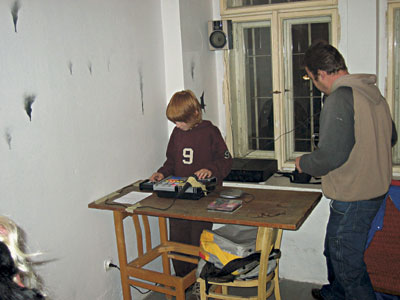
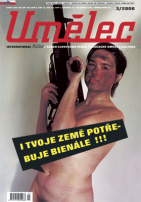















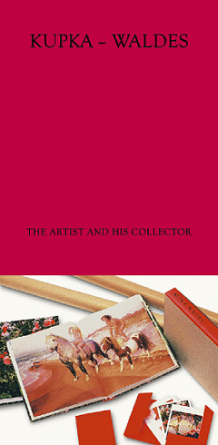






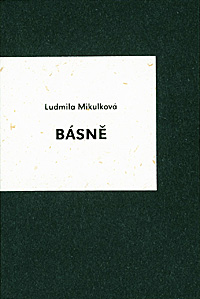





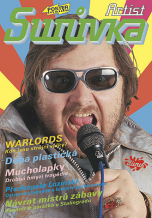
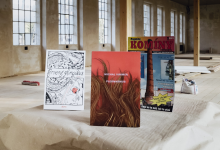
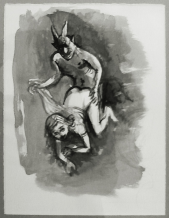


 We Are Rising National Gallery For You! Go to Kyjov by Krásná Lípa no.37.
We Are Rising National Gallery For You! Go to Kyjov by Krásná Lípa no.37.
Comments
There are currently no comments.Add new comment